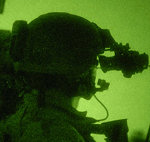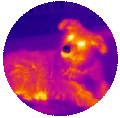![SkeetIR Micro Mono Sight via https://www.baesystems.com/en-us/product/oasys-thermal-imaging-and-aiming#ske[Fair Use] SkeetIR Micro Mono Sight via https://www.baesystems.com/en-us/product/oasys-thermal-imaging-and-aiming#ske[Fair Use]](https://www.exportlawblog.com/images/skeetir.jpg) Last week a criminal indictment against Arkansas resident Scott Douglas Browning was unsealed after he was arrested on a number of charges including receiving property stolen from Fort Bragg, possessing testosterone and oxycodone, and exporting image intensification tubes and a thermal imaging monocular (pictured at left) to the Netherlands without a license. According to the indictment, Browning listed the items on eBay and sold them to a buyer or buyers in the Netherlands. The items were all allegedly listed on the USML and would have required a license from DDTC.
Last week a criminal indictment against Arkansas resident Scott Douglas Browning was unsealed after he was arrested on a number of charges including receiving property stolen from Fort Bragg, possessing testosterone and oxycodone, and exporting image intensification tubes and a thermal imaging monocular (pictured at left) to the Netherlands without a license. According to the indictment, Browning listed the items on eBay and sold them to a buyer or buyers in the Netherlands. The items were all allegedly listed on the USML and would have required a license from DDTC.
I’ve said so many times that it almost goes without saying, but the Government, in order to convict Browning on the export charges, must prove that he knew that the export of these items required prior authorization and were illegal without such an authorization. We’ll leave aside what someone tweaked out on testosterone and whacked out on oxycodone would know about the legality of his exports. Still, it seems likely, at least to me, that this is going to an uphill battle for the prosecution. It’s not like the guys who stole the stuff from Fort Bragg gave it to him with a warning that the items were export controlled. And it’s not like the guy was trying to sell this stuff in secret. He listed the items on eBay after all. Last time I checked, that wasn’t exactly a dark web site. And although the indictment is sparse on details, there is nothing to suggest that any of the normal indicia of a guilty conscience — false description of the item on shipping documents, confessions of guilt to undercover agents, etc. — are present here. Of course, the export charges may be the least of his worries here.

 Posted by
Posted by  Category:
Category: 

![AN/PSQ-20 Enhanced Night Vision Goggle (ENVG) by Program Executive Office Soldier [CC-BY-SA-2.0 (http://creativecommons.org/licenses/by-sa/2.0) and/or Public Domain (work of government employee)], via Flickr https://www.flickr.com/photos/peosoldier/16086876469 [cropped] AN/PSQ-20 Enhanced Night Vision Goggle (ENVG) by Program Executive Office Soldier [CC-BY-SA-2.0 (http://creativecommons.org/licenses/by-sa/2.0) and/or Public Domain (work of government employee)], via Flickr https://www.flickr.com/photos/peosoldier/16086876469 [cropped]](https://www.exportlawblog.com/images/night_vision_050515.jpg) Well, who would have thought? Contrary to broad expectations that export control reform would never in a million years come to Category XII, which contains tactical gamestoppers such as night vision and laser designators and markers, export control reform came today to Category XII in the form of proposed rules. The BIS proposed rules are
Well, who would have thought? Contrary to broad expectations that export control reform would never in a million years come to Category XII, which contains tactical gamestoppers such as night vision and laser designators and markers, export control reform came today to Category XII in the form of proposed rules. The BIS proposed rules are  On Monday the Directorate of Defense Trade Controls (“DDTC) published a
On Monday the Directorate of Defense Trade Controls (“DDTC) published a  BIS released today a document entitled “
BIS released today a document entitled “ Recent
Recent 

